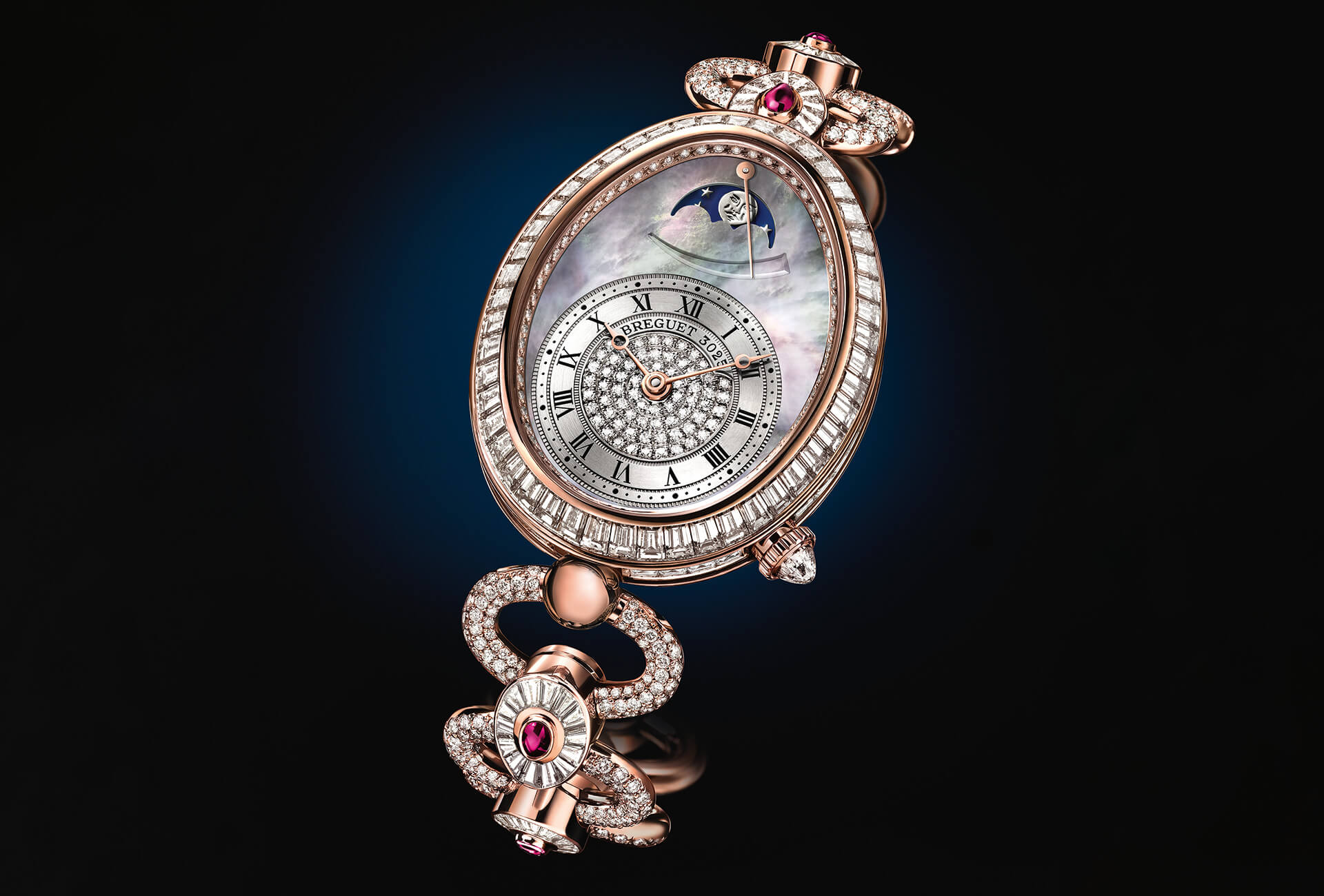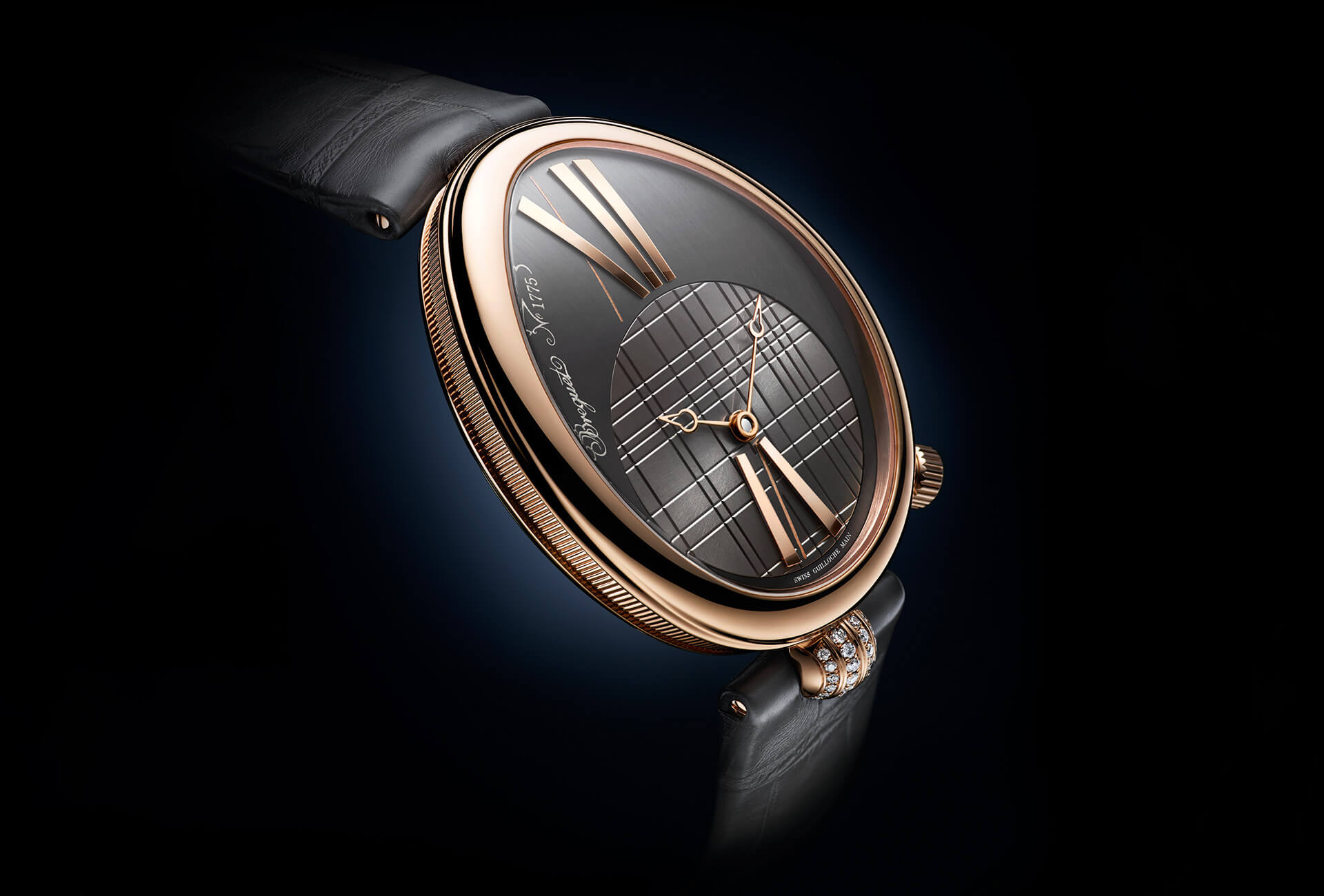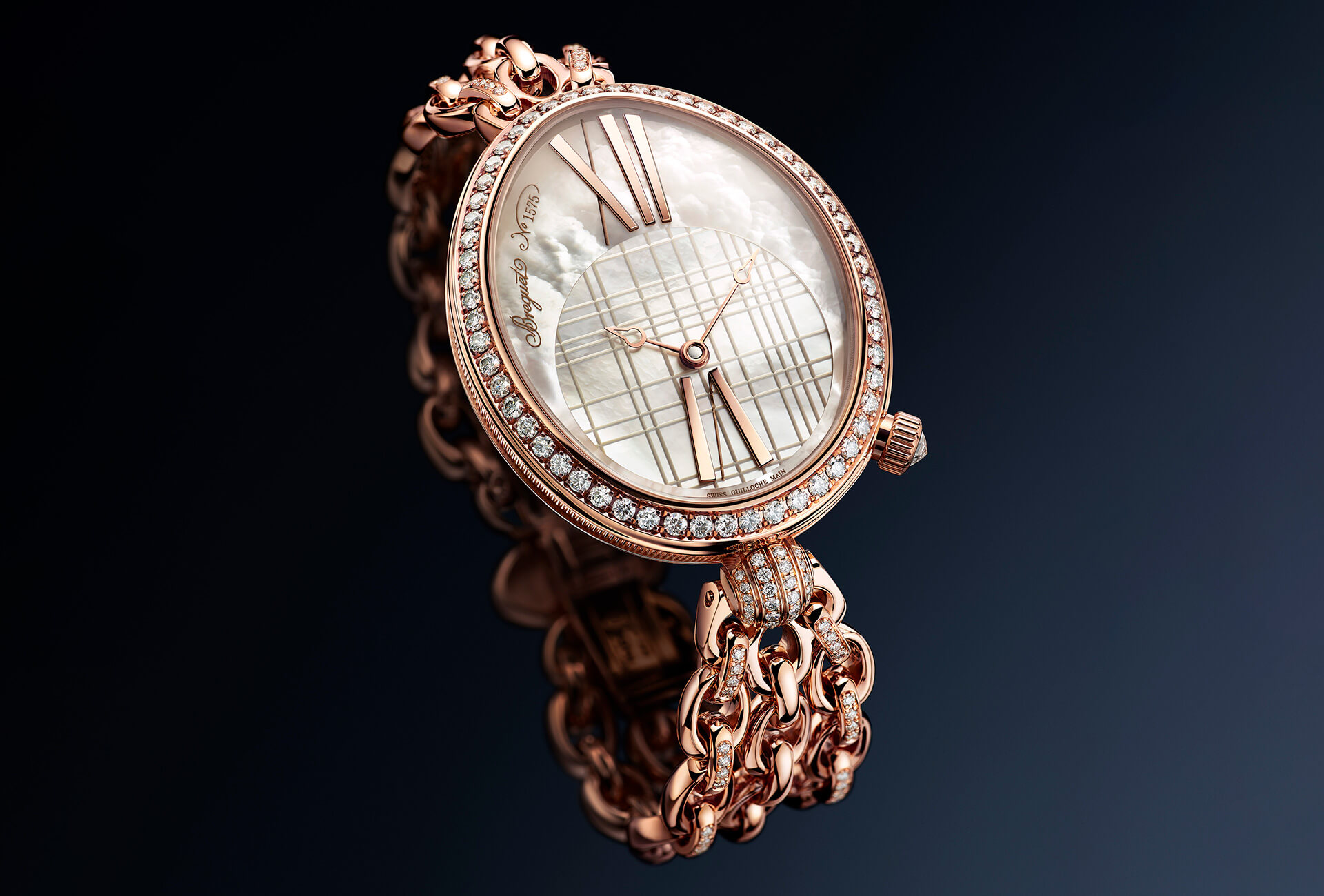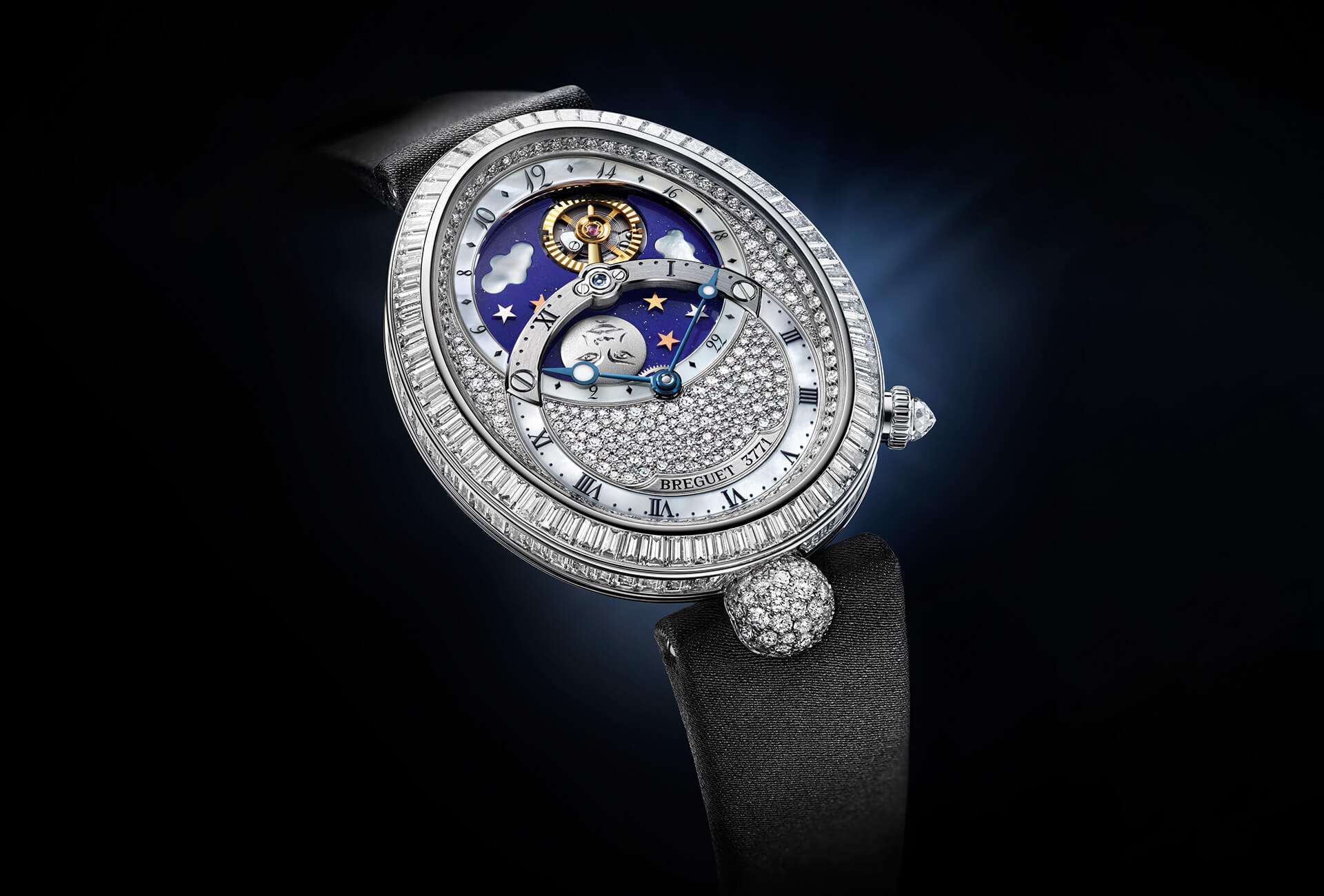First to catch the eye is the egg shape, then the small, off-centre dial showing hours and minutes. The perfect balance of singularity and classicism as only Breguet knows how, the Reine de Naples’ elegant silhouette has been drawing compliments since 2002. By the yardstick of the firm’s long existence, the collection is still in the bloom of youth, and yet it takes root in more than two centuries of history and is proud to proclaim royal origins, testified by the Breguet Museum’s archives. Its very name plunges us into the history of the first ever watch to be worn on the wrist, and the mystery of a timepiece that fell off the horological world’s radar. The Reine de Naples is a journey through the centuries, on the trail of a unique repeater watch with complications, attached to a wristlet of hair woven with gold threads and made at the request of Caroline Murat, sister of Napoleon Bonaparte and Queen of Naples.
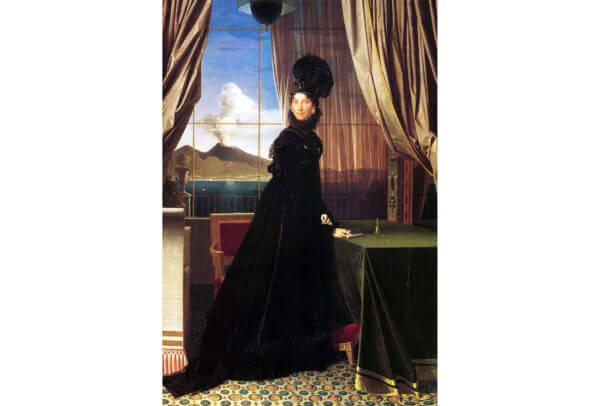
A watch built on words
The Reine de Naples collection as we know it descends from a timepiece that Caroline Murat ordered from Abraham-Louis Breguet in 1810, and which was delivered to her in 1812. Since 1855, however, all trace of the original has been lost. No engravings, no paintings, not a single drawing even. Nothing but words. And so it was that the present-day collection took shape on the basis of the more or less detailed descriptions tracked down in the registers of that period. They confirm that on June 8th, 1810, the Queen of Naples ordered two watches from Breguet. The first was a grand complication carriage watch, priced at 100 louis. The second was “a watch for a bracelet with minute repeater for which we quoted her the price of 5,000 francs.” A watch fit for a queen. Particularly one who had already purchased 34 clocks and watches from the firm between 1808 and 1814! Breguet set to work on creating the ancestor of the future Reine de Naples collection, or as it was then known, “a repeater in oblong form for bracelet”, listed in the registers under number 2639.
Archives record that 17 craftsmen were involved in making the watch, which required 34 separate operations.
The original Reine de Naples was unprecedented both artistically and mechanically. It possessed a “free” lever escapement and a thermometer. Breguet’s archives state that 17 craftsmen were involved in making the watch, which required 34 separate operations. Further reading tells us that an initial version had a gold dial with guillochage. This was replaced by the silver dial with guillochage and Arabic numerals of the finished piece.
On December 21st, 1812, the watch was delivered to its new owner. Breguet recorded it as “a very thin repeater watch N° 2639, silver dial, Arabic numerals, with thermometer and fast-slow outside the dial, the said watch fitted into a bracelet of hair entwined with gold thread, at will, a simple gold key, another similarly gold-trimmed bracelet, in a red calfskin case.” An additional entry, dated August 1855, indicates that the watch had a gold case with guillochage and “a large ring of cracked gold.”
Variations on a theme
Almost two centuries later, Breguet put together the pieces of the puzzle from descriptions found in its historic registers, and presented the Queen of Naples collection to the world. The year was 2002 and, visually, the watch bore numerous similarities to what the various descriptions had suggested of the original piece. Its white gold case is the distinctive egg shape. Hours and minutes are shown on a subdial by blued steel apple hands. Bezel and flange are hemmed with diamonds. Inside, an automatic mechanical movement counts time.
Dials come in mother-of-pearl with delicate guillochage, cameo-carved natural shell, or carefully set with diamonds and coloured precious stones.
Since then, Breguet’s best-known ladies’ watch has lent itself to multiple variations, both technical and aesthetic, thus confirming the success of its curved lines and feminine refinement. Dials have come in mother-of-pearl with delicate guillochage, cameo-carved natural shell, or have been carefully set with diamonds and coloured precious stones. The case in pink or white gold, often with diamonds, can be large – 43.75 x 35.50mm – or small – 33 x 24.95mm. Arabic or Roman numerals are stretched and shrunk at will, playing with the contours of the unusual egg shape. Other distinctive features are the small crown at 4 o’clock and the ball attachment at 6 o’clock which joins the case to a satin strap or woven gold bracelet – in reference to the wristlet of entwined gold and hair, described in Breguet’s archives. From a mechanical point of view, the modern-day Reine de Naples is an equally worthy heir to Caroline Murat’s watch, having contained numerous major complications including moon phases with a day/night indication or a striking mechanism – in particular the passing strike of the Reine de Naples Hour Strike which chimes three times every hour. This wealth of complications, when presented with such artistry, has made the Reine de Naples an icon of classical horology – and a fitting tribute to a truly regal timepiece whose fate remains shrouded in mystery.








